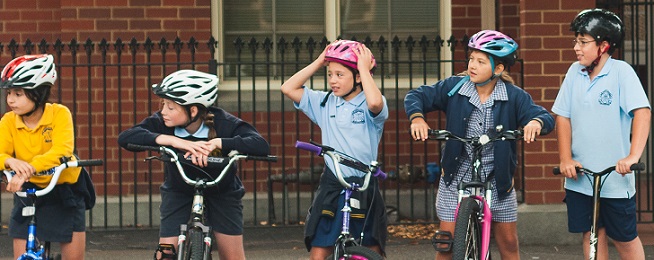The latest global analysis of childhood physical activity paints a grim picture of Australia – our children are not moving enough and we’re falling behind the rest of the world.
The report by the Active Healthy Kids Global Alliance (AHKGA) compared 49 countries from six continents in a global matrix to assess and grade trends in physical activity.
Australia scored a grade of D minus for overall physical activity, B minus for organised sport, D plus for active transportation and D minus for sedentary behaviour, ranking us an embarrassing 32nd out of 49 countries.
What’s worse is that there has been no meaningful change in children’s overall physical activity levels since the 2014 and 2016 report.
The report revealed that modern lifestyles – increases in screen time, growing urbanisation and the rise of automation in previously manual tasks – are contributing to a pervasive public health problem that must be recognised as a global priority.
See how other countries performed.
Back to the future
In 1970, eight out of ten children and teenagers walked, cycled or used public transport to get to school. Now, two in every three are being driven.
Australian children are among the most chauffeured young people in the developed world and it is causing a crisis; for the first time we have a generation that will not live as long as their parents.
Being active every day is important for Australian children and young people and can lay the foundations for a lifetime of healthy habits.
Currently, more than 70% of children and 91.5% of young people don’t meet the recommended 60 minutes of physical activity required each day to maintain their health and happiness. This figure is even worse when we look at activity among young girls.
Countless studies show that children and young people who are physically active are not only healthier and happier, they’re more resilient, independent, connected to their communities and find it easier to learn and retain information.
If we’re going to create a generation of happy and healthy children like our 1970s children were, this trend needs to be urgently reversed and Bicycle Network’s Ride2School program is part of the solution.
Help get your local school involved
The health and wellbeing of our children shouldn’t sit solely on the shoulders of parents. It’s a community wide problem that requires a community solution.
We need to create environments where it’s easy for more kids to ride and that’s where Ride2School can help.
Ride2School works closely with schools, students, teachers, parents, local councils, volunteers, stakeholders and the state government to identify and breakdown barriers to being active with proven interventions.
More than 2,000 schools Australia-wide are involved in the Ride2School program but to make an even bigger impact, we need to grow that number.
What can you do to help?
- Chat to the Principal about why riding to school is important and how the Ride2School program can help. All they need to do is complete this easy form.
- Rally the Parent Committee around National Ride2School Day on 22 March 2019.
- Speak with your classroom teacher and encourage them to register for Ride2School or get in touch with the Ride2School team (ride2school@bicyclenetwork.com.au)
Schools who register to be part of the Ride2School program before the end of term 4 will be the first to receive a free National Ride2School Day promo pack including posters and stickers, early next year.
With your help, we can move a generation towards to a lifetime of healthy habits.


